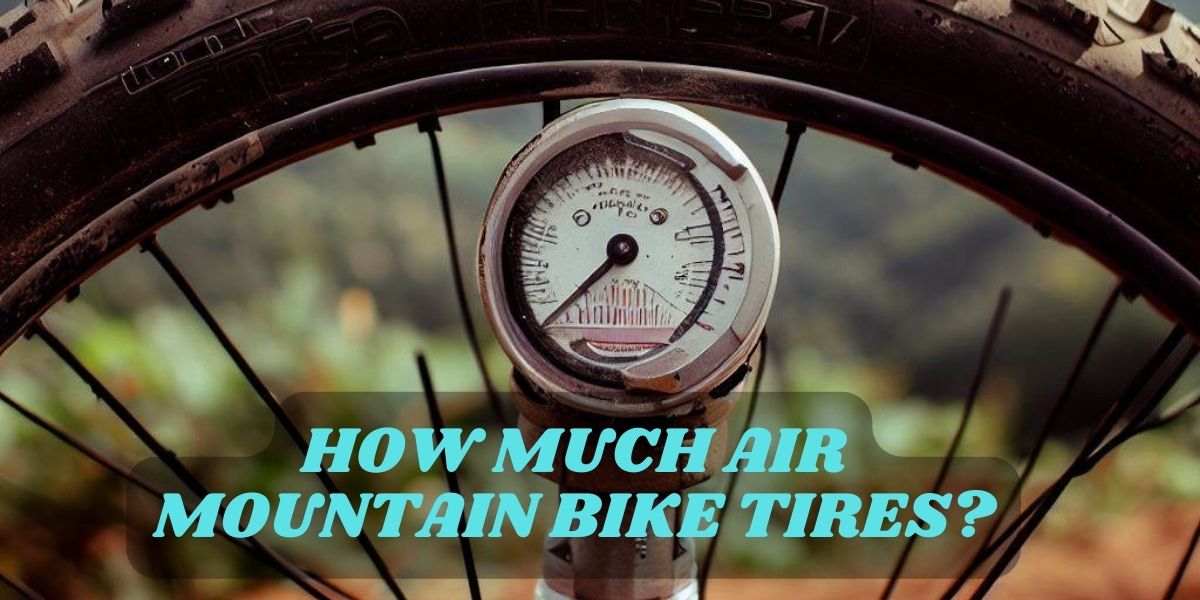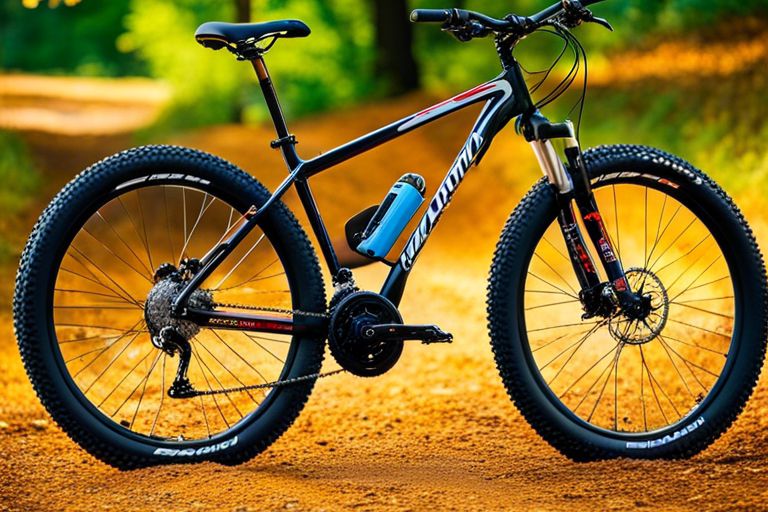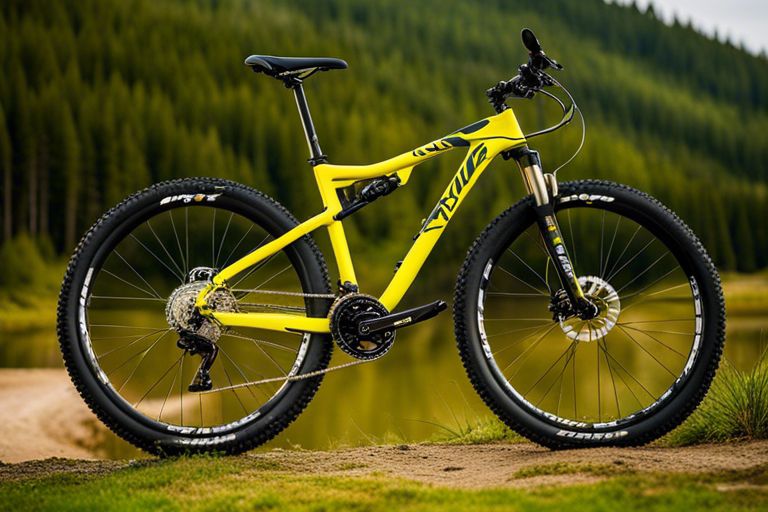Did you know that the right tire pressure can make all the difference in your mountain bike’s performance?
Studies show that proper tire pressure can improve your bike’s traction, speed, and overall handling on the trail.
But how do you know how much air to put in your mountain bike tires?
In this article, we’ll dive into the factors that affect mountain bike tire pressure and provide recommended tire pressure for different situations.
We’ll also cover the importance of regularly checking and adjusting your tire pressure and the tools you’ll need.
Whether you’re a seasoned mountain biker or new to the sport, mastering the art of tire pressure can take your riding to the next level.
So let’s get started!
Table of contents
Contents
Factors That Affect Mountain Bike Tire Pressure
Discover the key factors influencing the ideal pressure for your off-road cycling wheels. The right tire pressure will vary depending on factors such as your weight, the terrain you’re riding on, and the type of tire you’re using. Finding the perfect tire pressure that will give you the best balance between traction, speed, and comfort is important.
Another factor that affects tire pressure is the terrain. When riding on rocky, technical trails, you’ll want to run your tires at a lower pressure to increase traction and absorb shock.
On the other hand, when you’re riding on smoother surfaces, you can run your tires at a higher pressure to reduce rolling resistance and increase your speed.
The right tire pressure can make a huge difference in your overall performance on the trail. It’s also important to note that tire pressure can change depending on the weather conditions.
As the temperature drops, the air inside your tires contracts, which can result in lower tire pressure. Be sure to check your tire pressure regularly, especially during colder months, to ensure your tires are properly inflated.
With these factors in mind, it’s clear that there’s no one-size-fits-all answer to the question of how much air to put in your mountain bike tires. The ideal tire pressure will vary depending on various factors, including tire type, terrain, and weather conditions.
In the next section, we’ll review some recommended tire pressures for different situations to help you dial in the perfect pressure for your off-road cycling needs.
See also: How Much Are Mountain Bike Tires?
Recommended Tire Pressure for Different Situations
The optimal tire pressure varies depending on your riding conditions, so it’s important to tailor your pressure to your situation. Here are some recommended tire pressures for different situations:
- Tire pressure for beginners: If you’re new to mountain biking, starting with a slightly lower tire pressure is a good idea. This will give you more grip on the trail and make it easier to control your bike. Aim for around 20-25 psi in the front tire and 25-30 psi in the rear tire.
- Tire pressure for advanced riders: If you’re an experienced rider who likes to go fast and tackle technical trails, you’ll want to run a higher tire pressure. This will help prevent pinch flats and give you a faster rolling speed. Aim for around 30-35 psi in the front tire and 35-40 psi in the rear tire.
- Tire pressure for wet conditions: If you’re riding in wet or muddy conditions, you’ll want to run a slightly lower tire pressure to increase your traction. Aim for around 18-23 psi in the front tire and 23-28 psi in the rear tire.
Remember that these are just general guidelines, and you may need to adjust your tire pressure based on your weight, riding style, and specific trail conditions.
Always check your tire pressure before each ride and make adjustments as needed. It’s important to note that the right tire pressure can make a huge difference in how your bike performs on the trail. Running the right pressure can help you ride faster, smoother, and with more control.
In the next section, we’ll talk about the importance of regularly checking and adjusting your tire pressure to ensure you’re always getting the most out of your ride.
Importance of Checking and Adjusting Tire Pressure
To ensure your safety, you should always check and adjust your tire pressure before hitting the trails.
Low tire pressure can cause your tires to lose traction, increasing your chances of slipping or losing control.
On the other hand, high tire pressure can cause your ride to be uncomfortable and decrease your performance on the trails.
Safety on the Trails
Ensure you’re safe on the trails by properly inflating your tires to the recommended pressure. This is crucial not only for your safety but also for the safety of others on the trail.
Here are some tips to ensure a safe and enjoyable ride:
- Trail etiquette is important. Yield to other riders and hikers, especially on narrow sections of the trail. Communicate with other riders using hand signals or verbal cues to avoid collisions. Remember to be courteous and respectful to those around you.
- Always wear protective gear. A helmet is necessary, but knee and elbow pads can also provide protection. Protecting yourself will reduce the risk of injury should you fall off your bike.
Now that you know how to stay safe on the trails, let’s discuss how proper tire inflation can improve your performance.
Performance on the Trails
You’ll notice a significant improvement in riding on the trails when your tires are properly inflated. The importance of grip and impact absorption on mountain bike tires cannot be overstated, as it directly affects your control and speed on the trails.
The right tire pressure can provide a better grip, allowing you to take corners with more confidence and control. Similarly, the right pressure can absorb impacts better, reducing the risk of punctures and rim damage.
To help you understand how tire pressure affects your mountain bike performance, here’s a table that shows the recommended tire pressure ranges for different types of mountain biking:
| Type of Riding | Tire Width | Front Tire Pressure (psi) | Rear Tire Pressure (psi) |
|---|---|---|---|
| Cross-Country | 2.0-2.2 inches | 22-28 | 24-30 |
| Trail | 2.25-2.4 inches | 24-30 | 26-32 |
| Downhill | 2.5-2.8 inches | 26-32 | 28-36 |
As you can see, the recommended tire pressure varies depending on the riding you’ll be doing and the width of your tires. Finding the right pressure for your riding style and preferences to ride with confidence and control is important.
You can tackle any terrain on the trails with the right tire pressure. The next section will discuss the tools needed to check and adjust your tire pressure.
See also: Are Mountain Bikes Good For Trails?
Tools Needed for Checking and Adjusting Tire Pressure
In this section, we’ll need a few tools to ensure our tires are at the right pressure for optimal trail performance. Checking and adjusting tire pressure is an important task for any mountain biker, requiring a few essential tools. Here are some things you’ll need:
- A pressure gauge: You can choose between digital and analog pressure gauges depending on your preference. Digital gauges are more accurate, while analog gauges are more affordable and reliable.
- A portable air compressor: A portable air compressor is a great tool to have with you on the trail, as it allows you to inflate your tires quickly and easily. Look for a lightweight and compact compressor with a long hose for easy access to your tires.
- A stationary air compressor: A stationary air compressor is a good investment if you prefer to work on your bike at home. Look for a compressor with a high capacity and a powerful motor to inflate your tires quickly and efficiently.
- A tire pressure chart: A tire pressure chart is useful for determining the optimal pressure for your tires. Look for a chart specific to your bike model and tire size, and keep it handy for easy reference.
Having the right tools on hand is essential for checking and adjusting tire pressure, and it can make a big difference in the performance of your mountain bike.
Whether you use a digital or analog pressure gauge, a portable or stationary air compressor, or a tire pressure chart, ensure you have everything you need to keep your tires in top condition.
Next, we’ll explore some tips for checking and adjusting the trail’s tire pressure so you can stay safe and comfortable during your rides. You can maintain optimal tire pressure and enjoy your mountain biking adventures with the right tools and techniques.
Tips for Checking and Adjusting Tire Pressure on the Trail
Maintaining proper tire pressure is crucial for a smooth and safe ride, and these tips will help you do just that while hitting the trails.
Before heading out, it’s important to do a pre-ride check to ensure your tires are properly inflated. Use a tire pressure gauge to check the pressure of your tires and adjust as needed. Remember to also adjust for weather conditions, as colder temperatures can cause tire pressure to drop.
Stop and adjust the pressure during your ride if you notice your tires feeling too soft or firm. A soft tire can cause sluggish handling and increase the risk of punctures, while a firm tire can lead to a harsh ride and decreased traction.
Use your tire pressure gauge to check the pressure and make adjustments accordingly. It’s also a good idea to carry a portable pump or CO2 cartridge if you need to add air.
When adjusting your tire pressure, use the correct air for your specific tire and riding conditions. Overinflating or underinflating your tires can lead to poor performance and potential damage to your rims. Refer to your tire manufacturer’s recommendations for the proper PSI range and adjust accordingly.
By following these tips, you can maintain optimal tire pressure for a safe and enjoyable ride on the trails.
Conclusion 💭
Congratulations! You now know how much air to put in your mountain bike tires. Remember that tire pressure varies depending on rider weight, terrain, and weather conditions.
Always follow the recommended tire pressure for different situations to ensure a safe and optimal ride. Checking and adjusting tire pressure is crucial to your bike’s performance and safety.
So, having the proper tools and knowledge to do so is essential. Like how tires are the foundation of a bike, checking and adjusting tire pressure is the foundation of a safe and enjoyable ride. Keep your tires properly inflated, and always check your tire pressure before hitting the trail.
With this knowledge and practice, you’ll be able to tackle any terrain with confidence and ease. Happy riding!







Leave a Reply